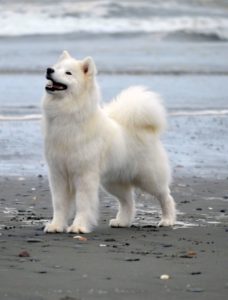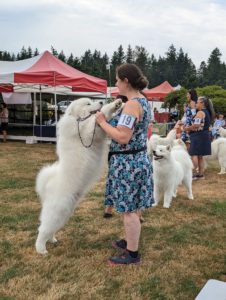Amazing Power Of A Dog’s Sense Of Smell
Amazing Power of a Dog’s Sense Of Smell
The canine nose has something like twenty times as many primary receptor cells as the human nose. How all of this works to detect odors is one of the great scientific wonders of the world. Studies in a number of species have found that different regions of the mucous lining within the nose have different chemical properties, more readily absorbing chemicals of one particular molecular shape or another, or preferentially absorbing in one region chemicals that are more water soluble and in another chemicals that are more fat soluble.
The ability of the nose to make precise chemical distinctions is truly extraordinary. Some pairs of chemicals that exist in nature are identical in every way – they are made up of exactly the same elements, joined together in exactly the same three-dimensional sequence – except that one is the three-dimensional mirror image of the other. Yet such “stereoisomers” frequently have a dramatically different odor, indicating that the nose can sort them out by their complex shape alone. The molecule carvone, for example, has the odor of caraway in one of its stereoisomers, the odor of oil of spearmint in its mirror-image form.
Measurements of the acuity of the dog’s nose suggest that the dog is many times more sensitive than man to the presence of minute quantities of odor molecules wafting in the air, but the data are all over the map. This is probably in part because the threshold for detecting different chemicals no doubt varies dramatically according to the particular chemical involved. Some comparative studies have found that dogs can detect certain organic chemicals at concentrations a hundred times less than people are able to; for other compounds the dog’s edge may be a factor of a million or more. In police and security work, dogs can detect the odor from natural gas leaks, concealed narcotics, explosives, and currency, all at levels well below the threshold at which humans are aware of the odor.
In controlled studies dogs could detect human scent on a glass slide that had been lightly fingerprinted and then left outdoors for as much as two weeks, or indoors for as much as a month; they could pick which of six identical steel tubes had been held in the hands of a person for no more than five seconds; they could distinguish between T-shirts worn by two identical twins who ate different foods, or by two nonidentical twins who lived in exactly the same environment and ate exactly the same foods.
More than such a remarkable sensitivity to trace odors, it is the ability to pick out particular odors of interest from a welter of competing smells and to match and distinguish them that is the dog’s most impressive olfactory feat. This ability is surely a reflection of the dog’s superior olfactory computing powers, for it requires not just smelling but analyzing. Dogs have no innate interest in the smell of people, narcotics, or hundred-dollar bills; but if trained repeatedly to focus on certain categories of smells, they can perform mind-boggling feats of cross-matching.
Dog Article courtesy of http://www.i-love-dogs.com/







